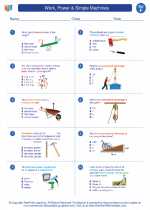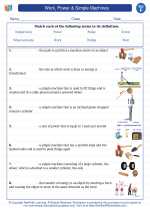Sound
What is Sound?
Sound is a form of energy that is created by vibrations. These vibrations travel through a medium, such as air, water, or solids, and are detected by our ears as sound.
How is Sound Produced?
Sound is produced when an object vibrates. These vibrations create waves that travel through the air or other mediums. For example, when you pluck a guitar string, it vibrates and produces sound waves.
Properties of Sound
- Frequency: The number of vibrations per second, measured in hertz (Hz).
- Amplitude: The measure of the energy of the sound waves, which determines the loudness of the sound.
- Pitch: How high or low a sound is, determined by the frequency of the sound waves.
- Timbre: The quality of the sound, which allows us to distinguish between different instruments or voices.
How Sound Travels
Sound waves travel in all directions from their source. They travel as longitudinal waves, which means the particles of the medium move back and forth in the same direction as the wave. Sound waves can travel through solids, liquids, and gases, but they travel at different speeds through each medium.
How We Hear Sound
When sound waves enter our ears, they cause the eardrum to vibrate. These vibrations are then converted into electrical signals that are sent to the brain, where we perceive them as sound.
Applications of Sound
Sound has many practical applications, including communication, music, and various technologies such as sonar and ultrasound.
Conclusion
Sound is a fascinating form of energy that plays a crucial role in our daily lives. Understanding its properties and how it travels can help us appreciate and utilize sound in various ways.
[Sound] Related Worksheets and Study Guides:
.◂Science Worksheets and Study Guides Sixth Grade. Work, Power & Simple Machines

 Worksheet/Answer key
Worksheet/Answer key
 Worksheet/Answer key
Worksheet/Answer key
 Vocabulary/Answer key
Vocabulary/Answer key
 Vocabulary/Answer key
Vocabulary/Answer key
